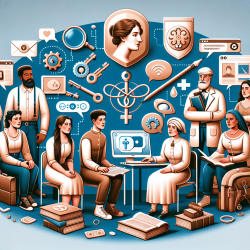Exploring 19th Century Birth Control: Lessons for Today's Practitioners
In the ever-evolving field of speech-language pathology, staying informed about historical perspectives can provide valuable insights for modern practice. The research article, "Birth Control in Nineteenth-Century America: A View from Three Contemporaries," offers a unique lens through which we can understand the social, philosophical, and technical aspects of birth control during that era. By examining the lives and thoughts of John Humphrey Noyes, Anthony Comstock, and Edward Bliss Foote, practitioners can gain a deeper appreciation for the complexities surrounding birth control and apply these insights to their own practice.
Understanding the Historical Context
The 19th century was a period of significant social change, and the topic of birth control was no exception. This era saw the emergence of various ideologies and practices that shaped public opinion and policy. By exploring the perspectives of Noyes, Comstock, and Foote, practitioners can better understand the multifaceted nature of birth control discussions and how they relate to broader societal issues.
Key Takeaways for Practitioners
- Social Influence: The social dynamics of the 19th century played a crucial role in shaping attitudes toward birth control. Practitioners can draw parallels between these historical influences and contemporary social factors that impact speech-language pathology.
- Philosophical Insights: The philosophical debates of the time provide a framework for understanding ethical considerations in modern practice. By examining these historical discussions, practitioners can refine their ethical decision-making processes.
- Technical Innovations: The technical aspects of birth control in the 19th century highlight the importance of innovation and adaptation. Practitioners can apply this mindset to embrace new technologies and methodologies in their own practice.
Encouraging Further Research
While the research article provides a comprehensive overview of 19th-century birth control, it also serves as a springboard for further exploration. Practitioners are encouraged to delve deeper into the historical context and draw connections to their own areas of expertise. By doing so, they can enhance their understanding of how historical perspectives can inform modern practice.
To read the original research paper, please follow this link: Birth Control in Nineteenth-Century America: A View from Three Contemporaries.










